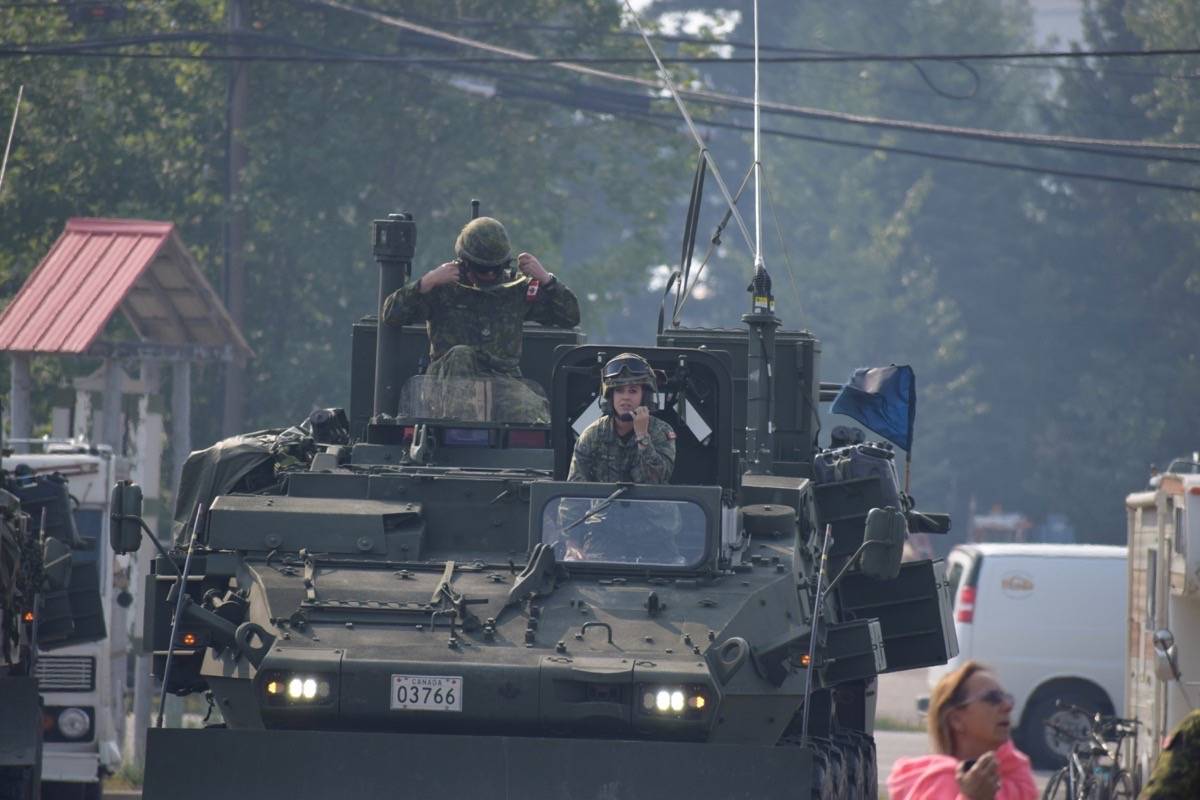News
Canada Deploys Armed Forces to Tackle Fast-Spreading Wildfires

Canada is sending military forces to British Columbia to combat fast-moving wildfires, Prime Minister Justin Trudeau announced on Sunday, as the western province battles flames that have forced the evacuation of more than 35,000 people.
British Columbia announced a state of emergency and banned non-essential travel to make room for evacuees and firefighters, and advised drone operators and those shooting photographs of the fires to keep a safe distance from the rescue personnel.
West Kelowna Fire Chief Jason Brolund expressed optimism after four days of battling “epic” fires. He claimed conditions had improved, allowing firefighters to put “boots on the ground” and drop water to put out the fires that threatened the 150,000-person town.
“Things are looking up. We’re now feeling like we’re moving forward rather than backward, which is fantastic…” Brolund stated to the Canadian Broadcasting Corporation. He did, however, warn of challenging days ahead in containing the McDougall Creek fire.
Forest fires are not unusual in Canada, but the spread of blazes and interruptions highlight the severity of the country’s worst wildfire season on record, which some scientists attribute to climate change.
Other blazes, aggravated by extreme drought, have been reported closer to the border and in the Pacific Northwest of the United States.
Just across the border in Washington state, firefighters were battling two major fires, the Grey Fire and the Oregon Road Fire, which had charred over 20,000 acres of forest area and damaged over 100 houses.
In Canada, officials urged individuals residing in evacuation zones to leave promptly in order to preserve their lives and avoid firefighters from dying while attempting to save them.
Officials have not yet estimated the overall number of buildings destroyed. Social media videos and photographs showed the damage of structures and automobiles, as well as massive flames devouring large trees.
The Canadian government-owned Trans Mountain pipeline and its expansion project, which runs through the interiors of British Columbia to the Pacific Coast, were unharmed by the fires, a company representative said on Sunday.
The pipeline expansion’s Coquihalla section, southwest of Kamloops, is the closest to a fire zone.
“Underground pipelines are typically buried a few feet below the surface and are protected from fire by the soil and the constant movement of liquid moving through the pipeline,” said the spokeswoman.
The flames have depleted local resources and drew assistance from the federal authorities as well as 13 other countries. At least four firefighters have perished while on the job.
Approximately 140,000 square kilometres (54,054 square miles) of land, roughly the size of New York state, have already been burnt, with smoky cloud stretching as far east as the United States. Due to extensive drought-like conditions, officials predict that the fire season will last until September.
Canada has spent more on battling and suppressing wildfires than on sustaining its firefighting people and programme since 2009.
A wildfire raging 2,000 kilometres to the north in Yellowknife, the capital city of the Northwest Territories, forced the evacuation of nearly all of its 20,000 residents last week.
The fire is currently not projected to reach city borders by the end of the weekend, according to officials, with some rain and cooler temperatures assisting in slowing its progress.
Krista Flesjer, who evacuated from the city with her pets, described the journey as difficult.
“I was afraid of getting caught up in the fires that were coming across the road,” she explained.
Flesjer’s major concern is whether her house, which is only two years old, would survive.
The TransCanada route in British Columbia was closed near Chase, some 400 kilometres northeast of Vancouver. The highway serves as the main east-west conduit for thousands of motorists and lorries travelling to Vancouver, Canada’s busiest port.
Kip Lumquist, who works at a gift shop in Craigellachie, a tourist destination along the route, said she has seen a lot of devastation in the last week.
“It was insane. “We couldn’t see the hills, mountains, trees, or anything for probably two and a half days,” Lumquist explained. “I drive a white car, and when I walked out to get in my car… it was just black.” It’s a disaster for the community.”





























